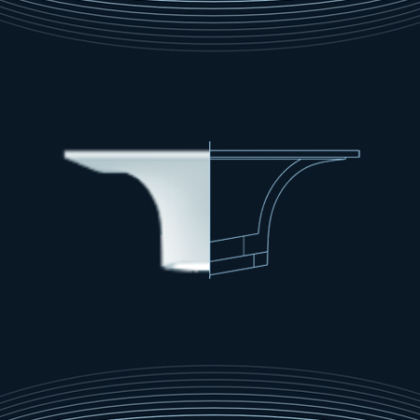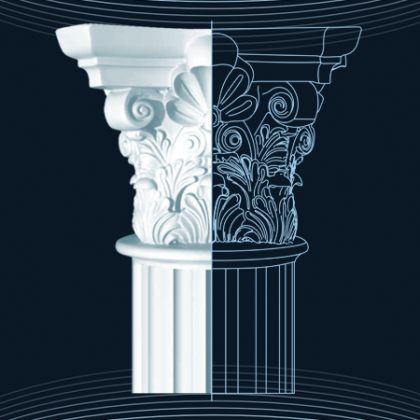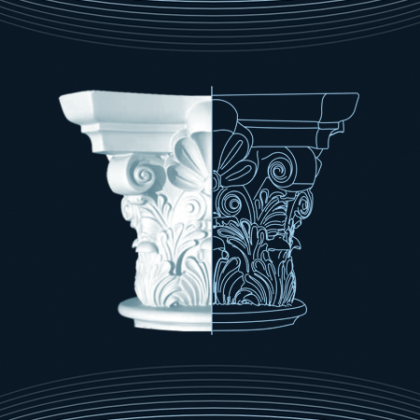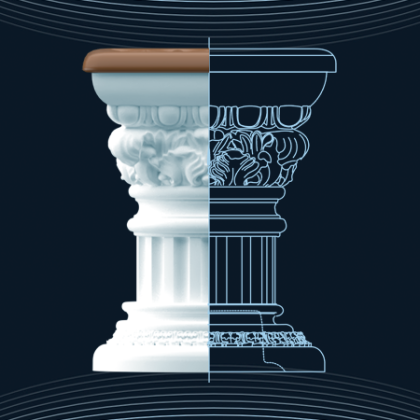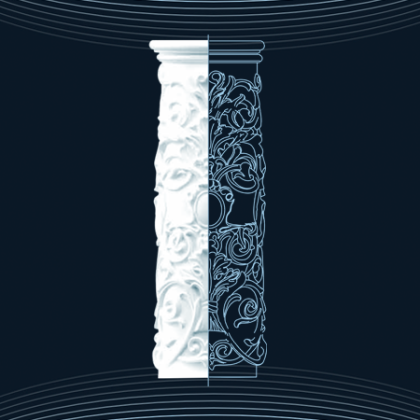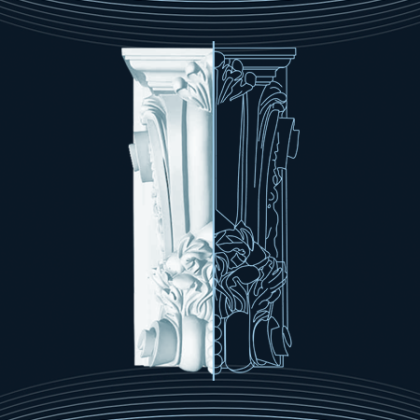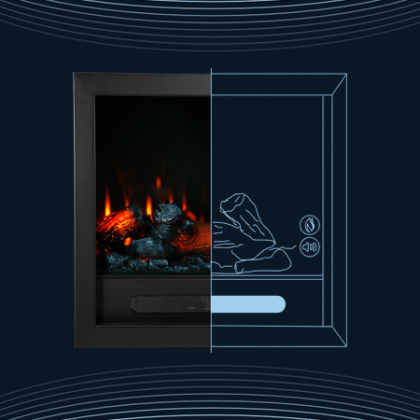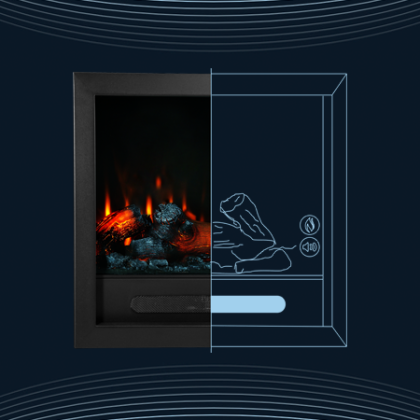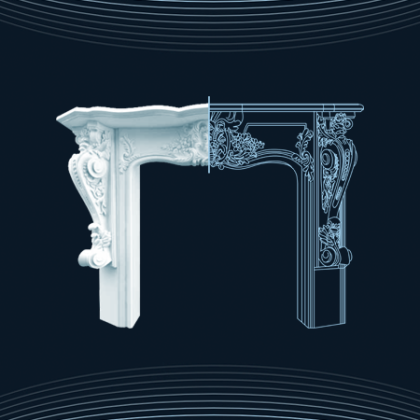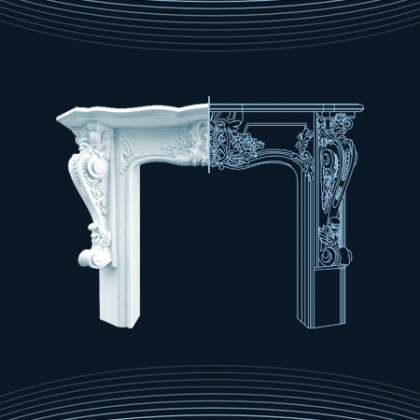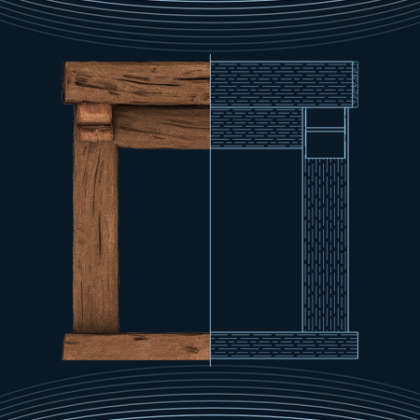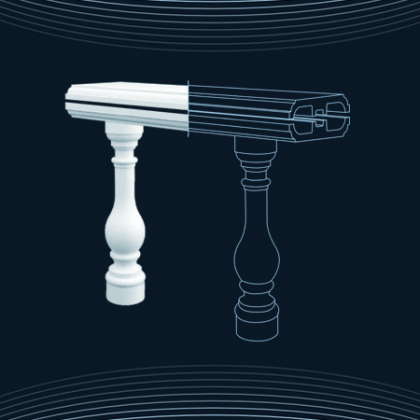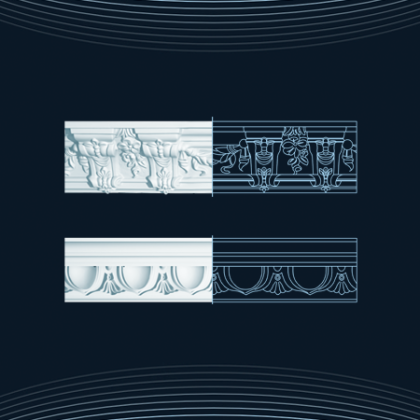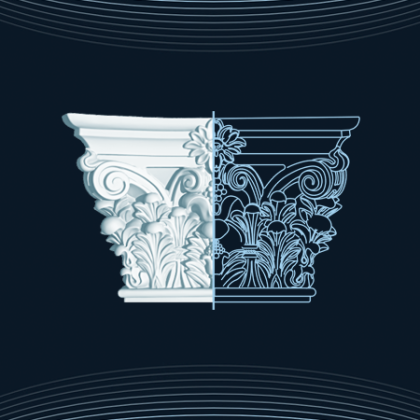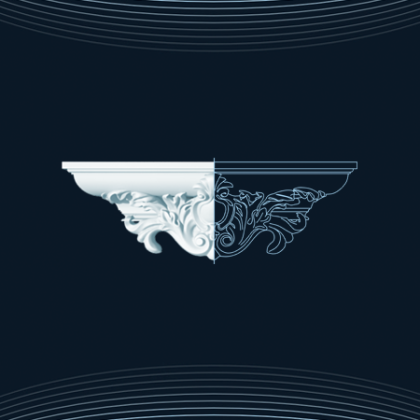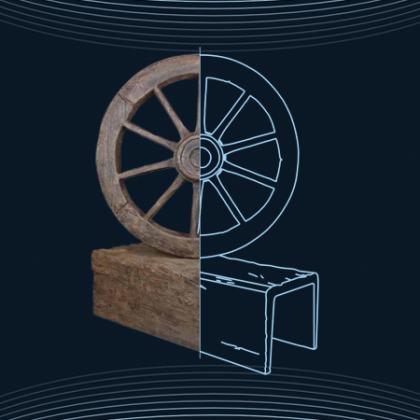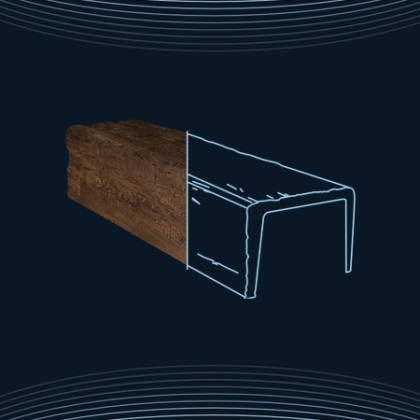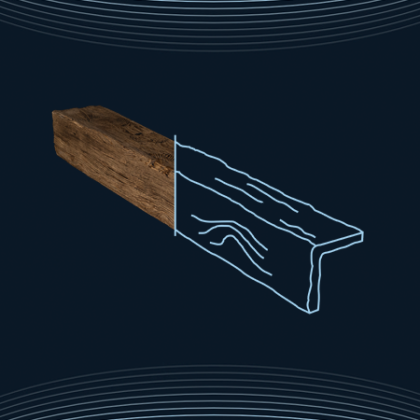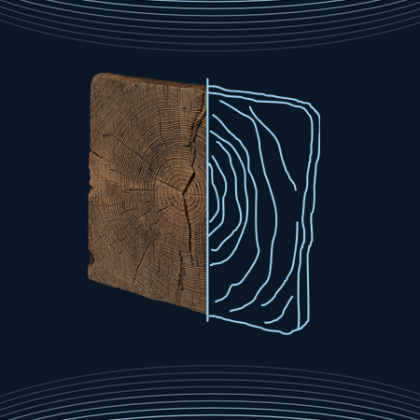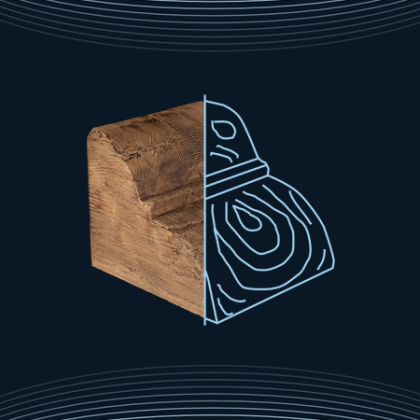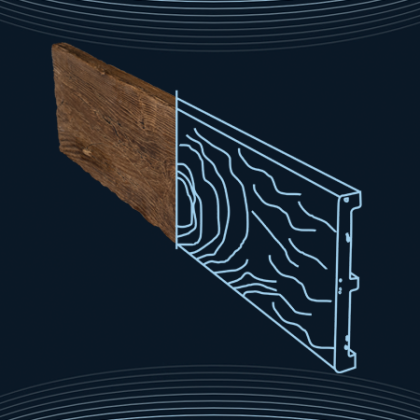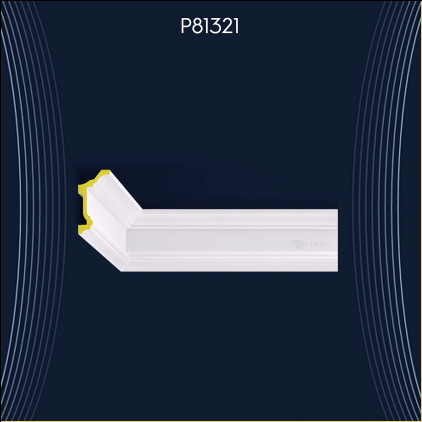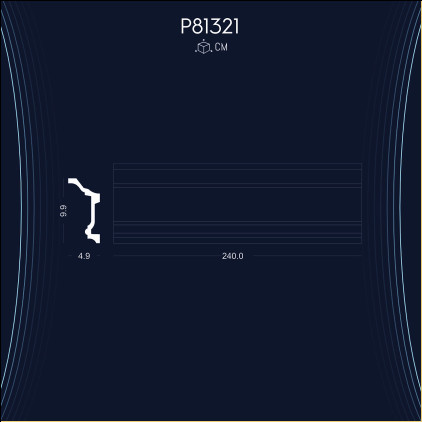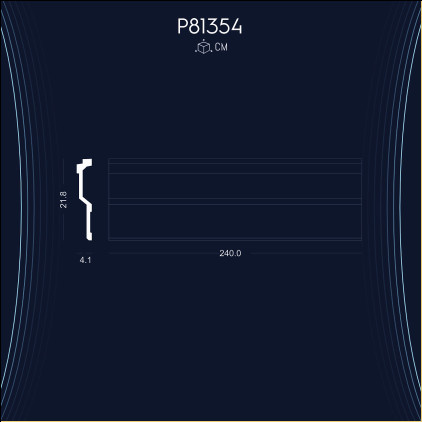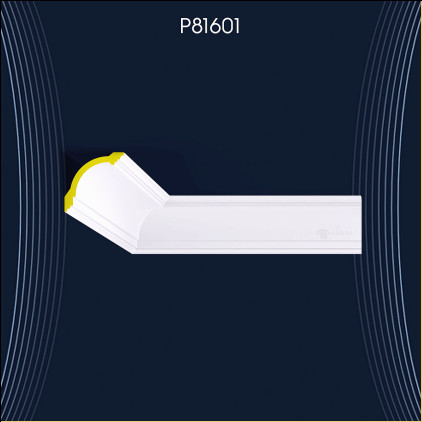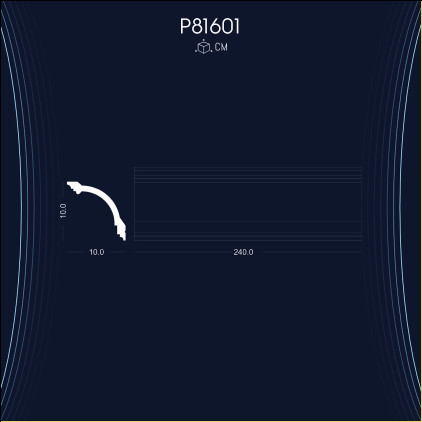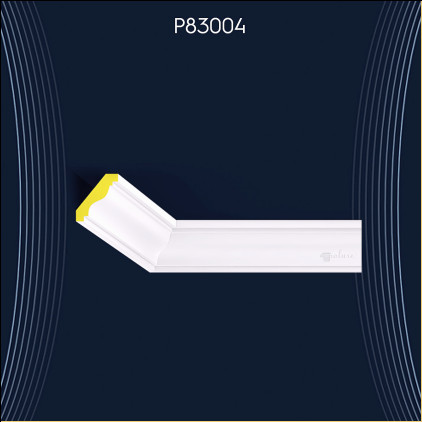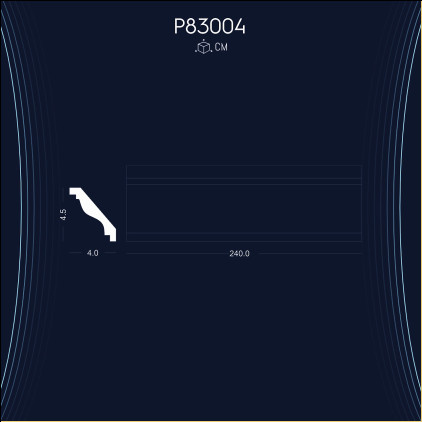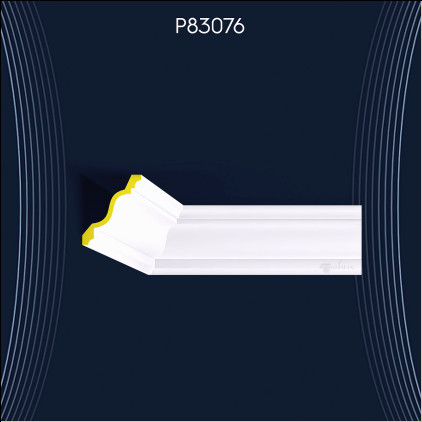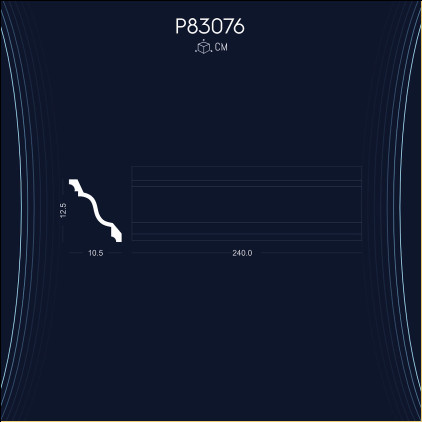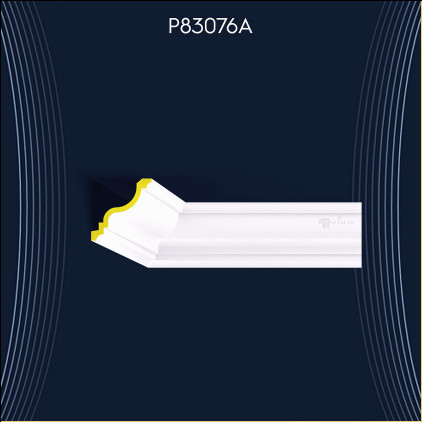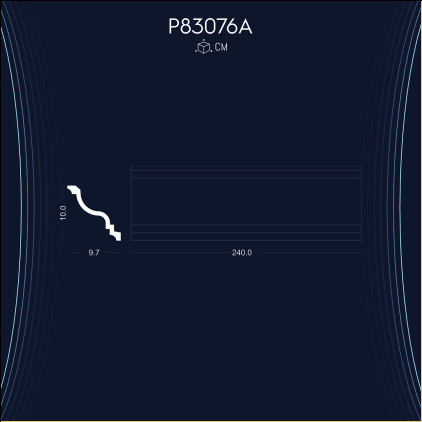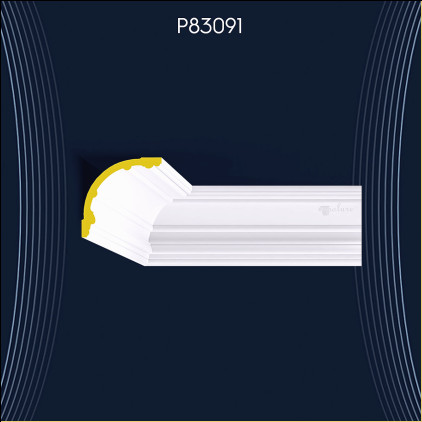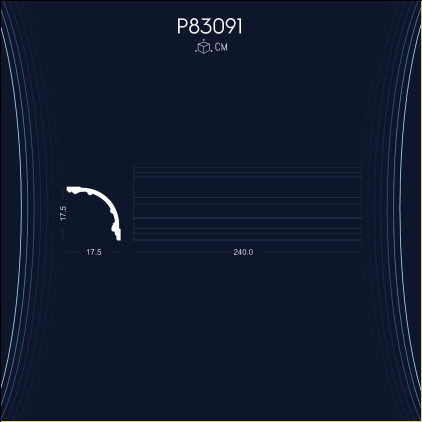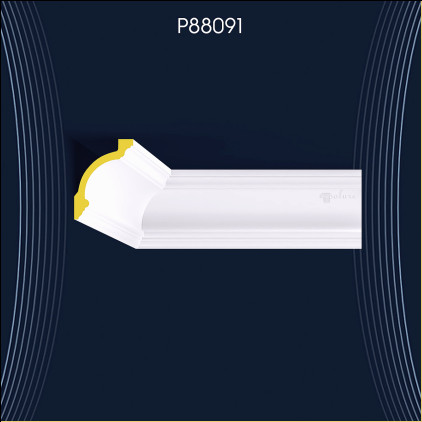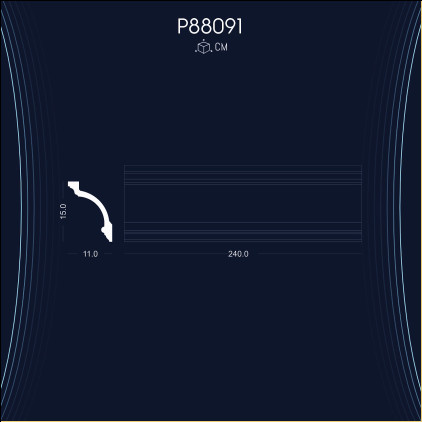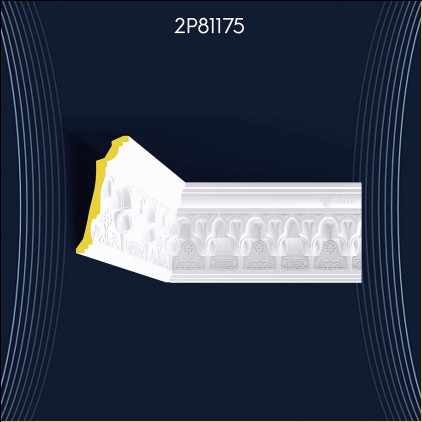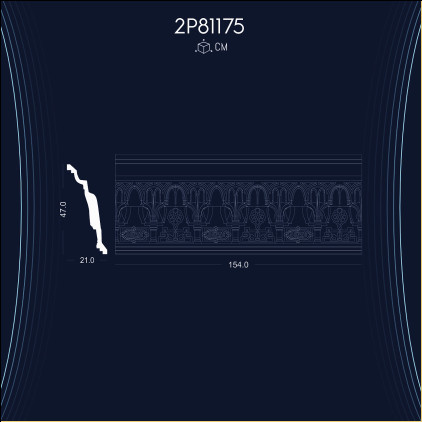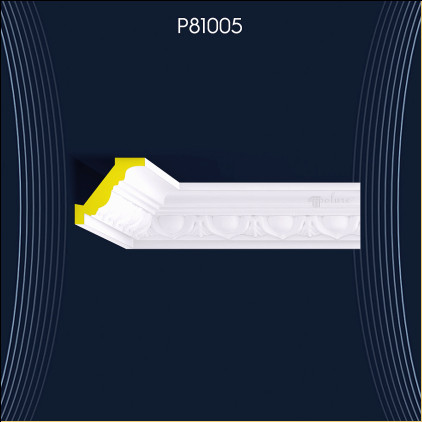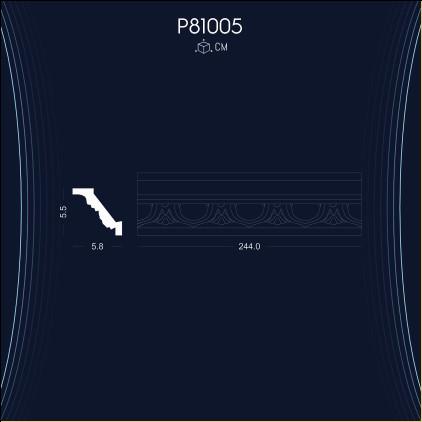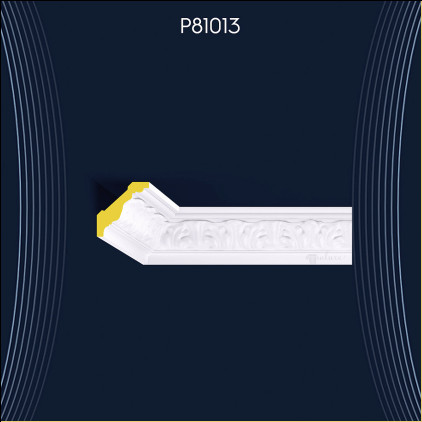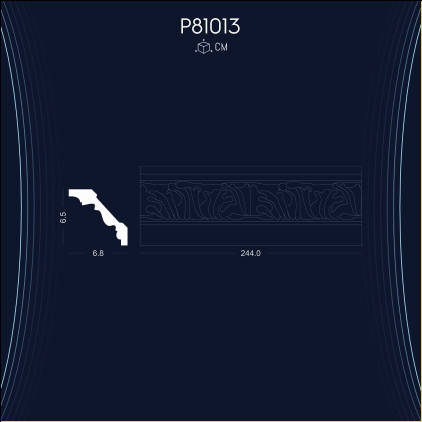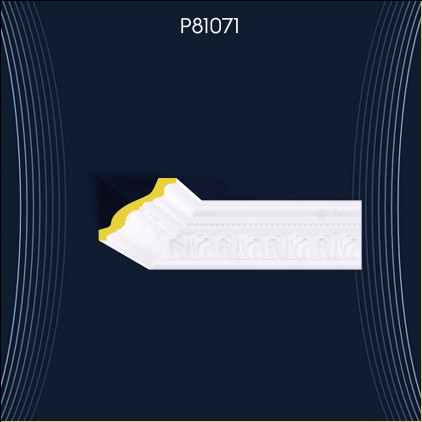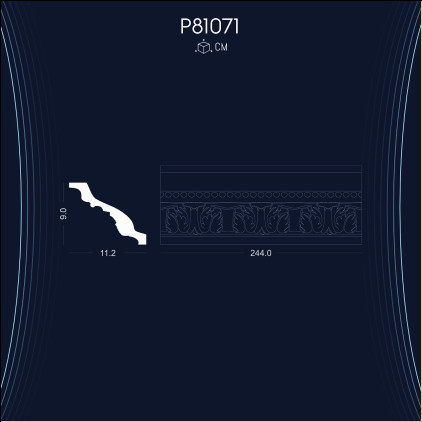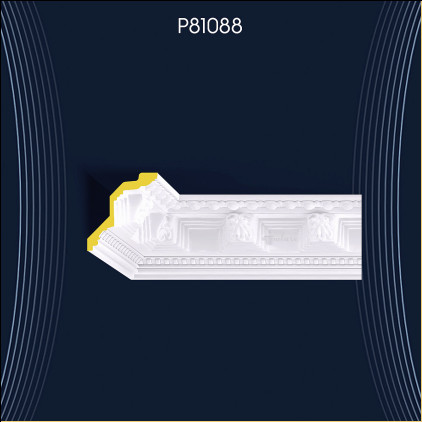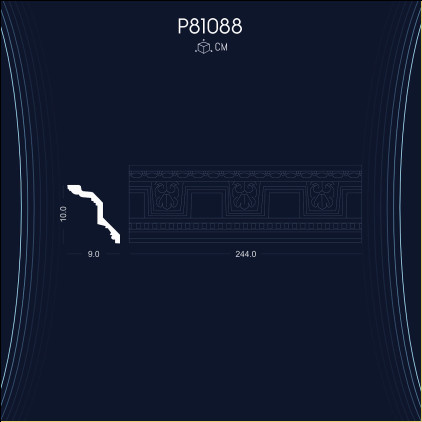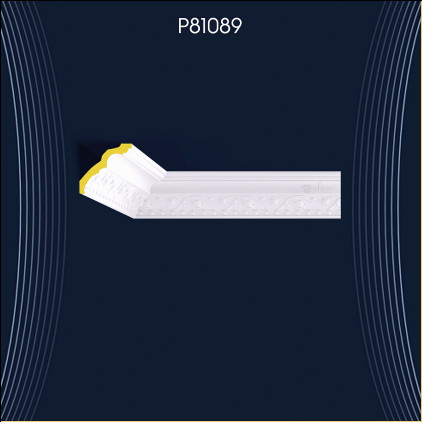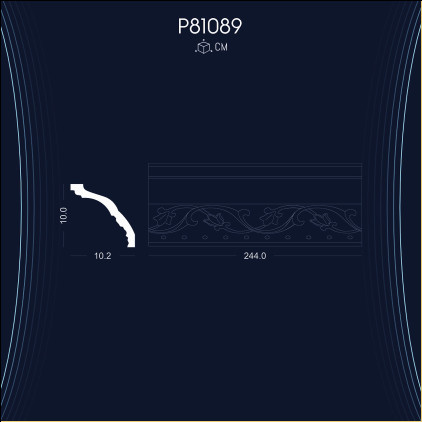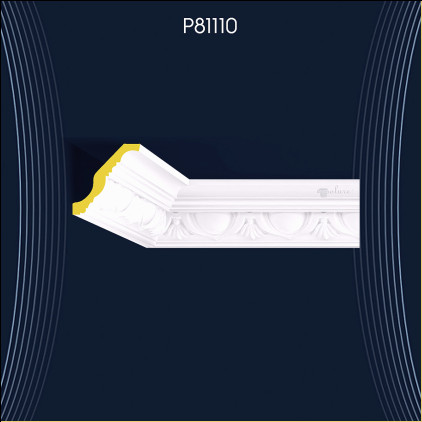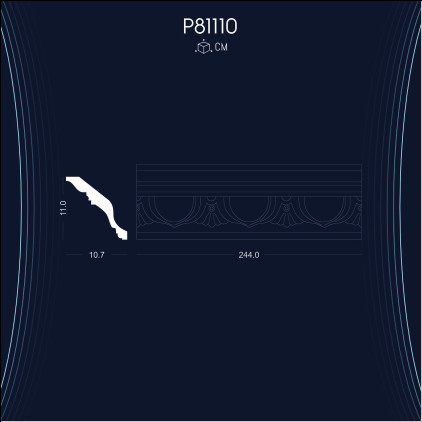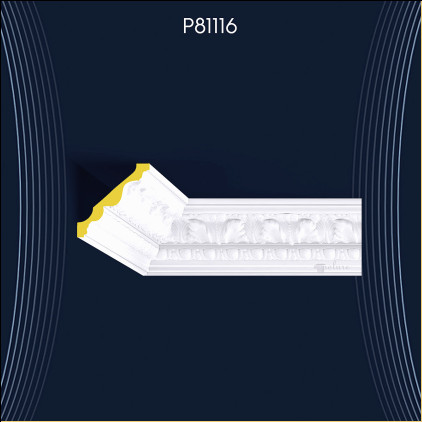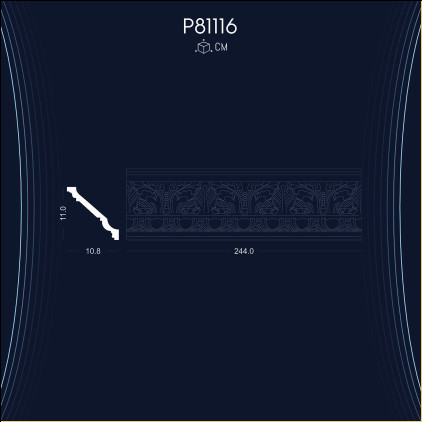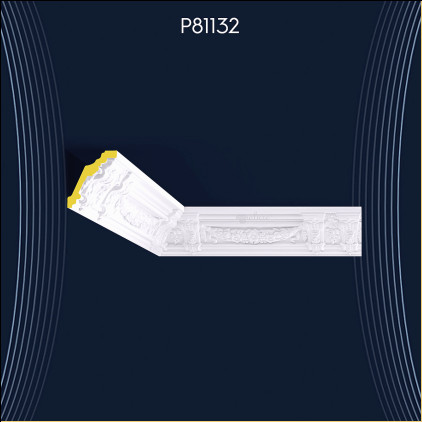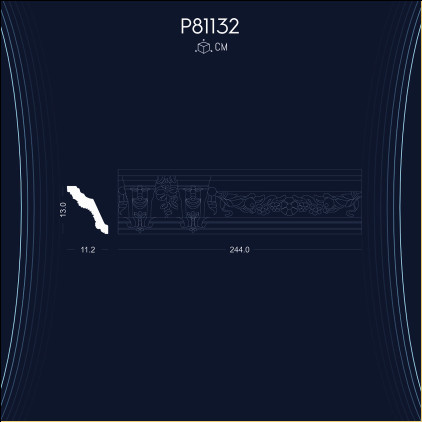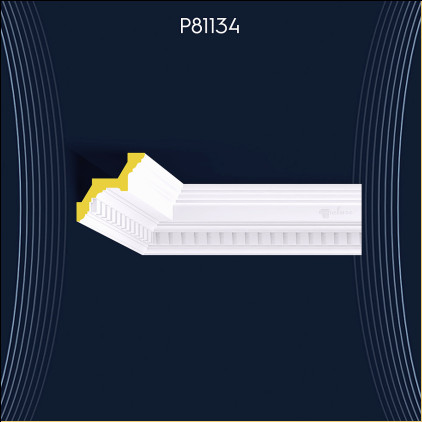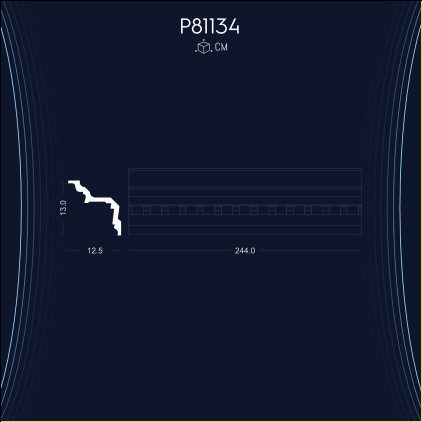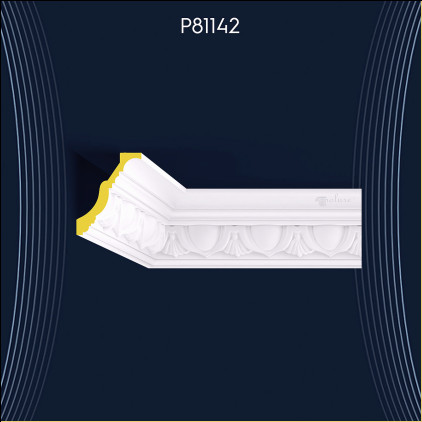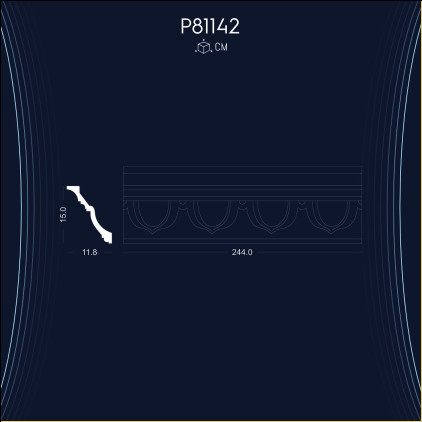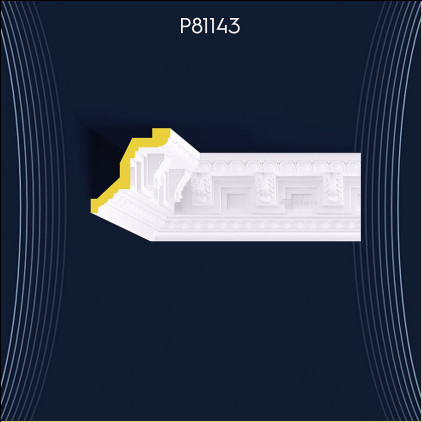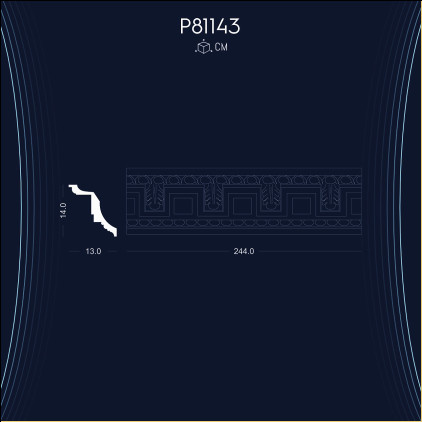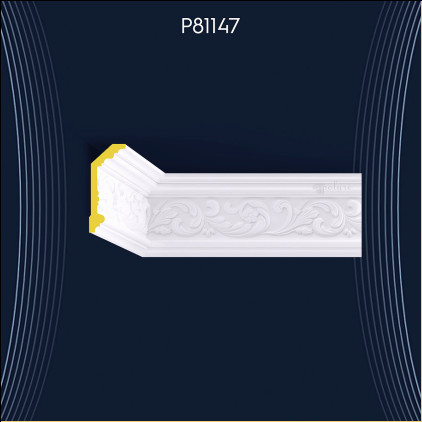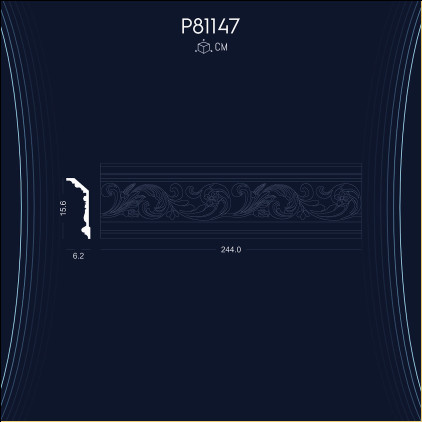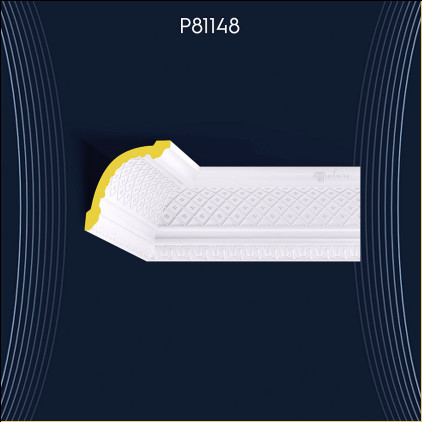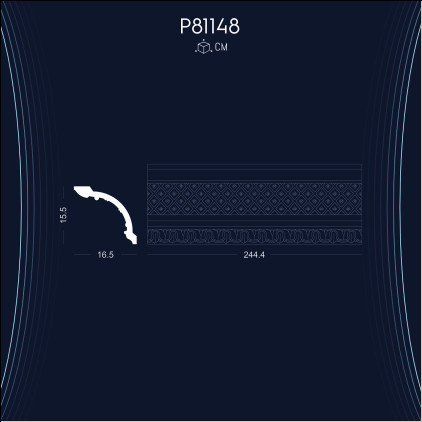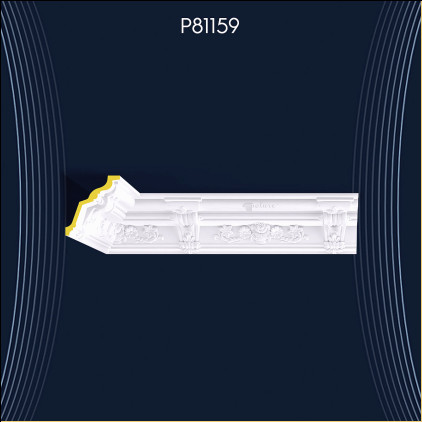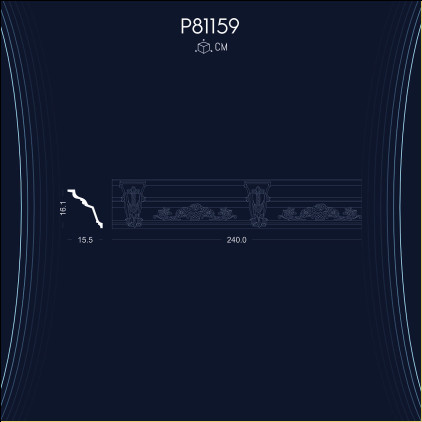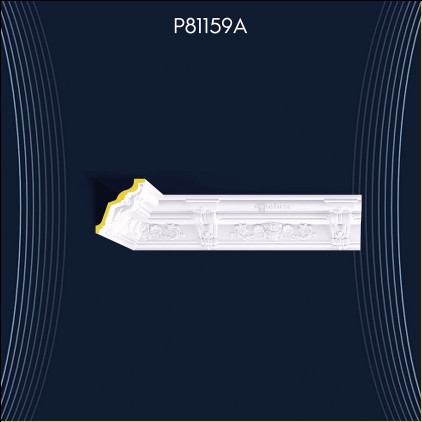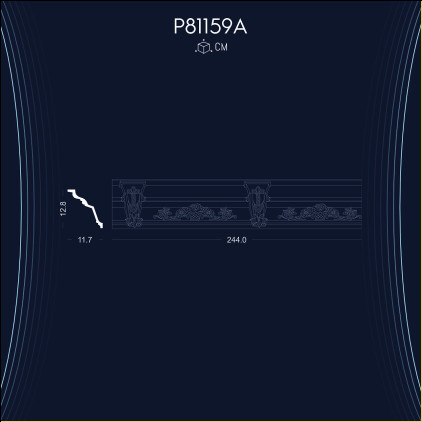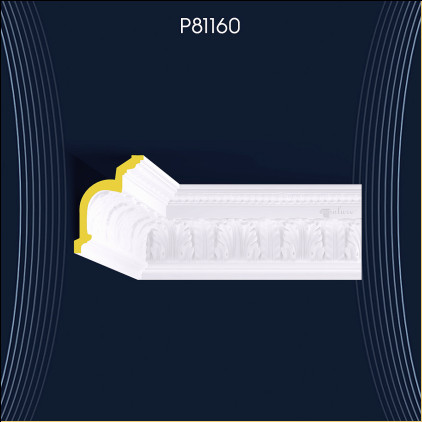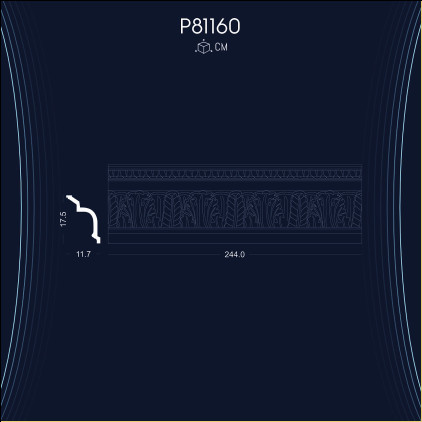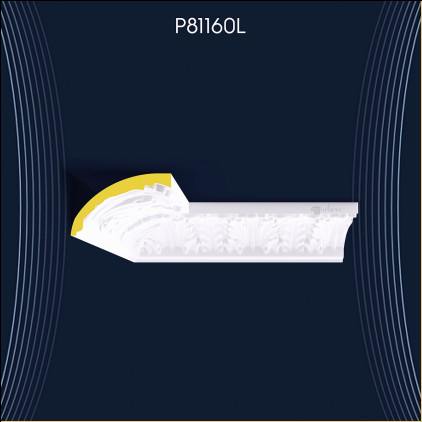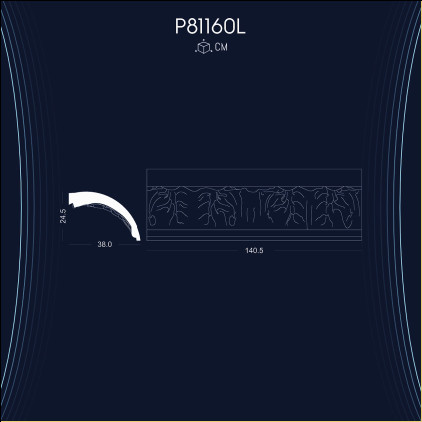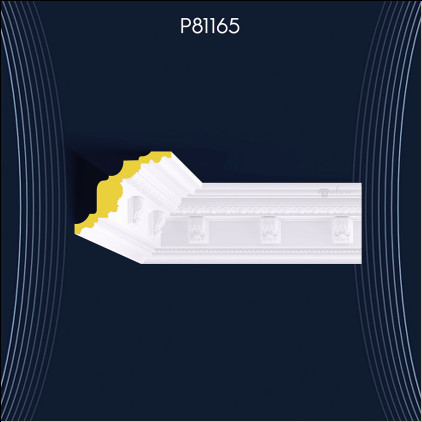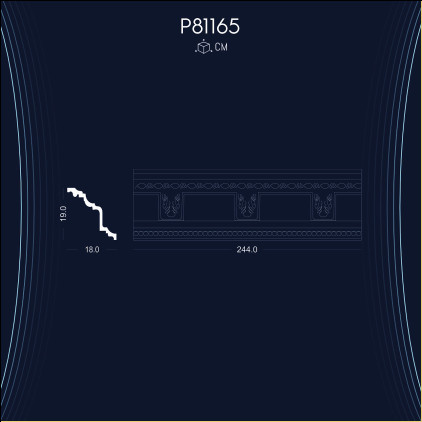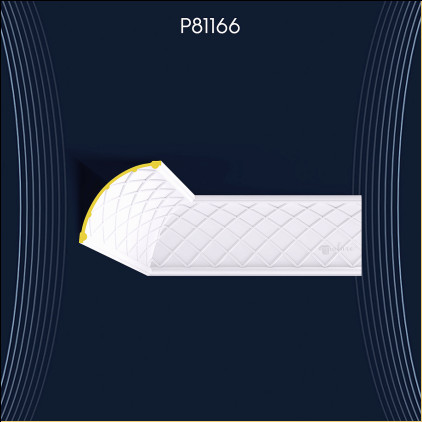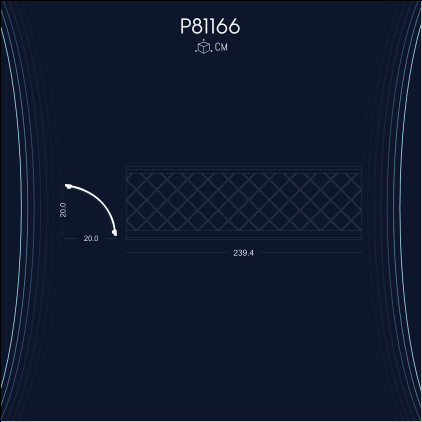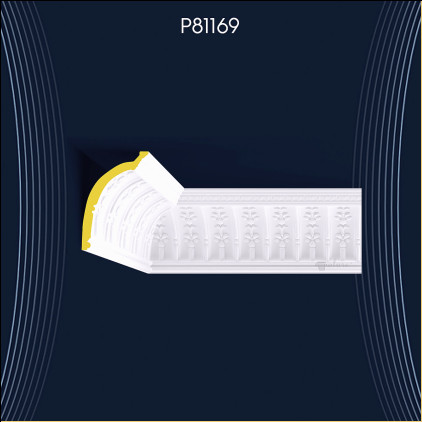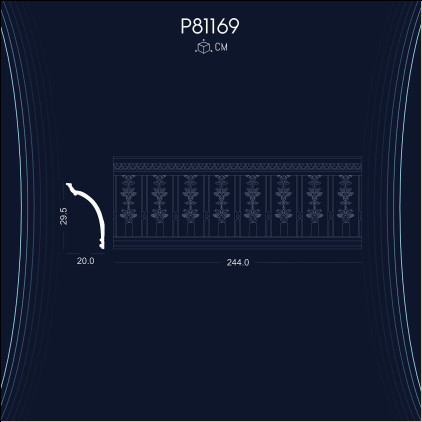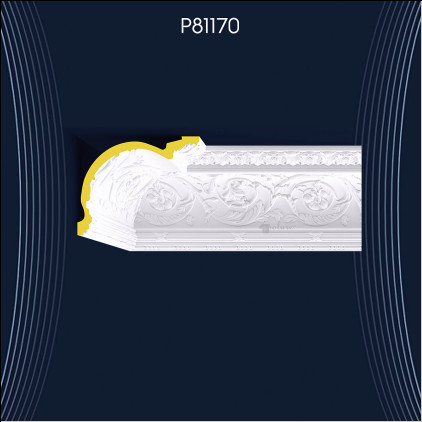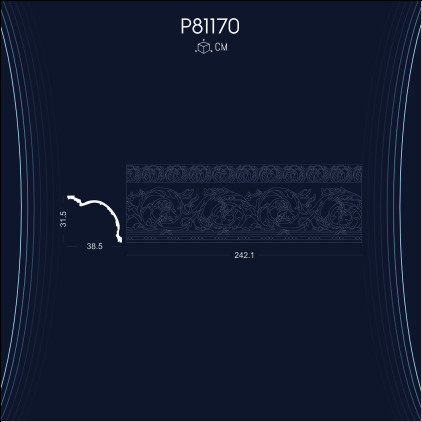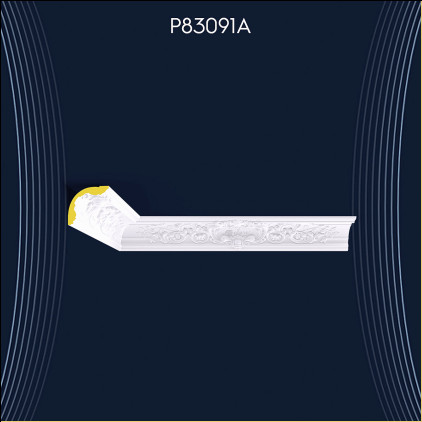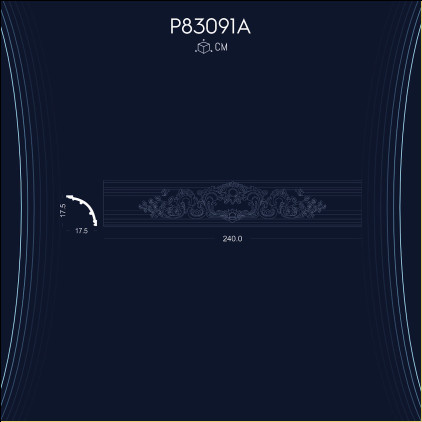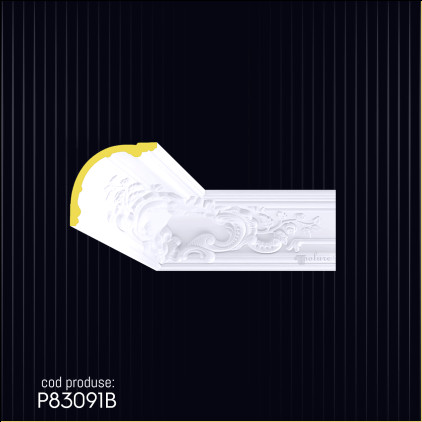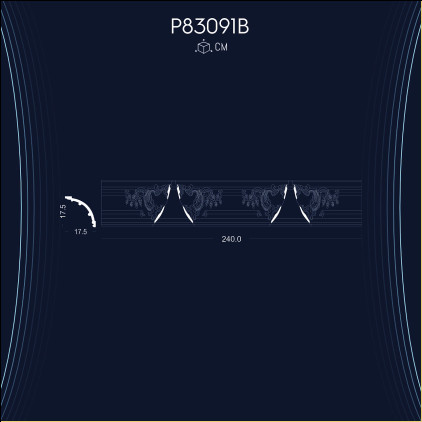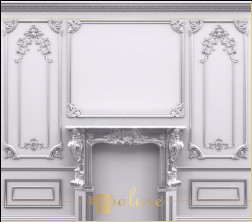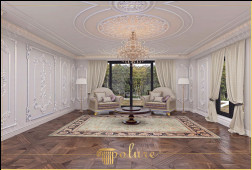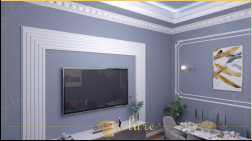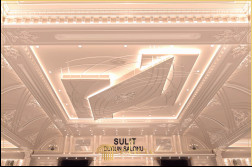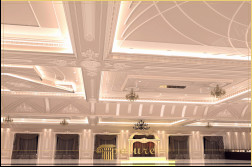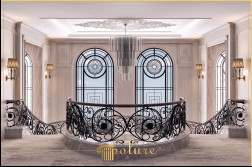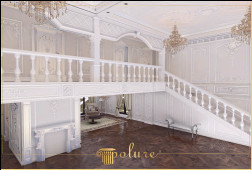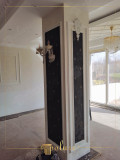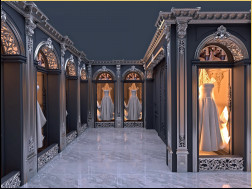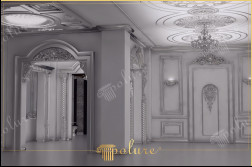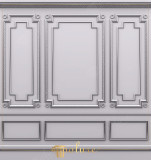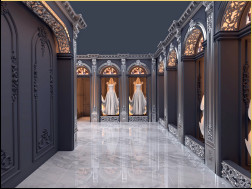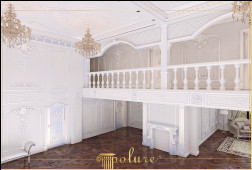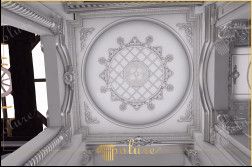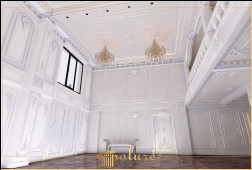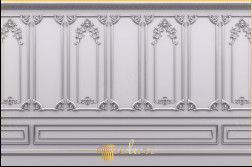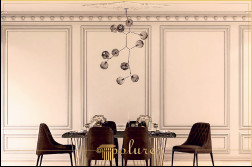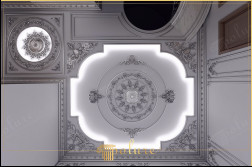Products
Simple Polyurethane Cornices P81321: Durability and Resistance in Decoration Designs - Ideas and Samples for Decorating
77.46 lei 69.71 lei
Polyurethane Flat Cornices P81354 Simple Designs: Enhancing Walls and Ceiling Junctions with Soft Transitions in Decoration Styles and Ideas
143.46 lei 129.11 lei
Polyurethane Flat Cornices P81601: Decorative Polyurethane Cornice Designs - Complexity and Flexibility in Decor Styles
86.63 lei 77.97 lei
Polyurethane Flat Cornices P83004: Durable, Easy Installation, Versatile Decoration Designs and Ideas
33.46 lei 30.11 lei
Polyurethane Flat Cornices P83076 Simple Cornices: Aesthetic, Durability, and Warranty Guaranteed Decoration Models Design and Ideas
77.46 lei 69.71 lei
Simple Polyurethane Cornices P83076A: Advantages and Key Features of Flat Polyurethane Cornices for Home Decor Ideas and Designs
67.38 lei 60.64 lei
P83091 Simple Polyurethane Cornices: Superior Decorative Quality Design Ideas for Home Decoration
169.13 lei 152.22 lei
Elegant Polyurethane Cornices P88091 - Durable Decorative Models Design Ideas for Interior Decoration
104.50 lei 94.05 lei
Decorative Polyurethane Cornice Designs 2P81175 - Unique Polyurethane Cornice Model 2P81175 Decoration Ideas and Samples
665.71 lei 599.14 lei
Polyurethane Patterned Cornices P81005 - Ideal Decoration Designs for Wet Bathrooms and Kitchens
55 lei 49.50 lei
Decorative Polyurethane Cornice Designs P81013: Aesthetic and Functional Decoration Ideas
73.93 lei 66.54 lei
Decorative Polyurethane Cornices P81088 - Aesthetic and Durable Design Ideas for Home Decor
94.67 lei 85.20 lei
Polyurethane Patterned Cornices P81089: Lightweight and Durable, Unique Design Decoration Models Ideas
101.43 lei 91.29 lei
Polyurethane Patterned Cornices P81110 Decorative Cornices: Flexibility and Style in Interior Design Decoration Models Design and Ideas
109.10 lei 98.19 lei
Easy-to-Install Patterned Polyurethane Cornices P81116 - Wall Decorations Design Models & Decorating Ideas
110.90 lei 99.81 lei
Mold-Resistant Polyurethane Patterned Cornices P81132 - Durable and Aesthetic Decoration Design Ideas
121.72 lei 109.55 lei
Decorative Polyurethane Cornices P81134: Comfort and Design in Home Decoration Ideas
142.46 lei 128.21 lei
Stylish and Modern Patterned Polyurethane Cornices P81142 - Perfect Decoration Ideas for Your Home: Design Models and Inspiration
110.90 lei 99.81 lei
Polyurethane Cornice Designs P81143: Classic and Modern Highlights in Decoration Ideas and Samples
132.99 lei 119.69 lei
Polyurethane Patterned Cornices P81147: Unique and Attractive Spaces with Decorative Design Ideas
118.57 lei 106.71 lei
Polyurethane Pattern Cornices P81148 Wall Covering: Benefits and Decorative Designs Decoration Ideas Design Samples
190.38 lei 171.34 lei
Patterned Polyurethane Cornices P81159: Discover Your Perfect Unique Style with Our Decoration Models and Design Ideas
178.75 lei 160.88 lei
Polyurethane Patterned Cornices P81160: Functional and Aesthetic Investments in Decorative Cornice Designs and Ideas
140.66 lei 126.59 lei
Polyurethane Patterned Cornices P81160L Decorative Plasters: Depth, Character, and Durability in Home Decoration Designs and Ideas
365.62 lei 329.06 lei
Easy-to-Install and Paint Patterned Polyurethane Cornices P81165 for Interior Design: Stylish Cornice Decoration Models, Designs, and Ideas
221.35 lei 199.22 lei
Durable and Stylish Polyurethane Patterned Cornices P81166: Design Ideas for Your Home Decor
225.15 lei 202.64 lei
Easy Installation of Polyurethane Patterned Cornices P81169: Quick and Effective Guide for Design Models and Decoration Ideas
242.54 lei 218.29 lei
Polyurethane Patterned Cornices P81170 Model Insulators: Thermal Comfort and Noise Reduction Decoration Designs and Ideas
517.74 lei 465.97 lei
Elegant Patterned Polyurethane Cornices P83091A - Perfect Decor For Your Home: Design Models and Decoration Ideas
182.42 lei 164.18 lei
Polyurethane Patterned Cornices P83091B: Decorative Cornices and Patterned Plasters for Your Home - Design Models and Decoration Ideas
182.42 lei 164.18 lei
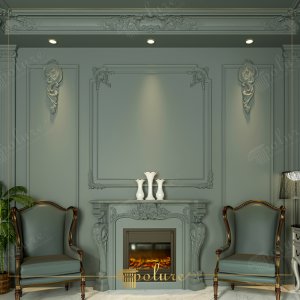
Polyurethane Plasterboard Models Prices refer to the cost of different types of polyurethane-coated plasterboard products.
Polyurethane plasterboard is a versatile and innovative building material that combines the durability of polyurethane with the ease of installation of plasterboard. This combination makes it an ideal choice for a wide range of applications, from residential to commercial projects. The unique properties of polyurethane plasterboard, such as its insulation capabilities, moisture resistance, and strength, set it apart from traditional building materials. There are several models of polyurethane plasterboard available in the market, each designed to meet specific needs and requirements. Some common models include: The prices of polyurethane plasterboard vary depending on the model, size, and additional features. On average, the cost can range from: It's important to note that these prices are indicative and can vary based on the supplier, location, and market conditions. For accurate pricing, it's recommended to contact suppliers directly or request quotes from professional distributors. In conclusion, polyurethane plasterboard offers a modern solution for building and renovation projects, combining durability, versatility, and performance. With a range of models available, it caters to various needs and preferences, ensuring that there is a suitable option for every application. When considering polyurethane plasterboard for your project, take into account the specific requirements of your application to choose the most appropriate model and ensure that you get the best value for your investment.Polyurethane Plasterboard Models and Prices
Models
Prices
What is the historical significance of Polyurethane Plasterboard Models Prices?
The evolution of building materials has been a pivotal aspect of architectural and construction history. Among the myriad of materials that have shaped our built environment, polyurethane plasterboard holds a unique place. This material, known for its versatility, durability, and insulation properties, has become a staple in modern construction practices. However, the journey of polyurethane plasterboard models and their pricing is a story that intertwines with the broader narrative of technological advancement and market dynamics. Polyurethane plasterboard emerged in the latter half of the 20th century as a result of the quest for more efficient, lightweight, and easy-to-install building materials. Its invention was a milestone in the construction industry, offering a superior alternative to traditional plaster and lath. The introduction of polyurethane into plasterboard manufacturing marked a significant innovation, enhancing the material's insulation properties and resistance to moisture, mold, and mildew. The pricing of polyurethane plasterboard models has undergone significant changes over the years. Initially, the cost was relatively high due to the novelty of the technology and the manufacturing processes involved. However, as production methods improved and the material became more widespread, prices began to stabilize. Today, the cost of polyurethane plasterboard is competitive, reflecting its popularity and widespread adoption in both residential and commercial construction projects. The introduction and evolution of polyurethane plasterboard have had a profound impact on the construction industry. Its ease of installation and superior performance characteristics have made it a preferred choice for architects, builders, and homeowners alike. Moreover, its energy-efficient properties align with the growing emphasis on sustainable building practices, further cementing its place in the industry. In conclusion, the historical place of polyurethane plasterboard models and their pricing is a testament to the material's significant impact on the construction industry. From its inception to its current status as a staple in construction, polyurethane plasterboard has not only transformed how buildings are constructed but also how they perform in terms of energy efficiency and environmental sustainability. As we move forward, the continued innovation and adaptation of building materials like polyurethane plasterboard will undoubtedly play a crucial role in shaping the future of construction.The Historical Place of Polyurethane Plasterboard Models and Their Pricing
The Emergence of Polyurethane Plasterboard
The Evolution of Pricing
Impact on the Construction Industry
Conclusion
Polyurethane plasterboard models: prices and properties.
Polyurethane plasterboard is a versatile construction material that combines the durability of polyurethane with the ease of use of plasterboard. This innovative material is known for its excellent insulation properties, resistance to moisture, and ability to enhance the aesthetic appeal of interiors. Available in various models and sizes, polyurethane plasterboard is increasingly becoming a preferred choice for both residential and commercial construction projects. The market offers a range of polyurethane plasterboard models, each designed to meet specific needs. Prices vary depending on the model, size, and features. Below are some popular models: Note: Prices are indicative and may vary based on location, supplier, and market conditions. Polyurethane plasterboard offers a compelling combination of durability, insulation, and aesthetic appeal, making it an excellent choice for a wide range of construction projects. With a variety of models available, there is a polyurethane plasterboard option to meet almost any requirement. When selecting polyurethane plasterboard, consider the specific properties and features needed for your project to ensure you choose the most appropriate model.Polyurethane Plasterboard Models and Prices
Introduction to Polyurethane Plasterboard
Properties of Polyurethane Plasterboard
Popular Models and Their Prices
Conclusion
Are the applications and costs of polyurethane plasterboard models for decoration distinct?
Polyurethane plasterboards have become increasingly popular in both residential and commercial construction projects due to their versatility, durability, and ease of installation. These boards are used in a variety of applications, offering a wide range of aesthetic and functional benefits. The prices of polyurethane plasterboard models vary depending on their specifications, including thickness, density, and design patterns. One of the primary uses of polyurethane plasterboards is in interior design. They can be used to create intricate ceiling designs, wall panels, and other decorative elements. Their lightweight nature makes them easy to install, and they can be painted or finished to match any interior decor. This versatility allows for customized designs that can fit any aesthetic preference. Polyurethane plasterboards are also used for insulation purposes. Their thermal insulation properties make them an excellent choice for walls, ceilings, and floors. By helping to maintain consistent indoor temperatures, these boards can contribute to energy savings and improved comfort within a building. Another significant use of polyurethane plasterboards is in soundproofing applications. They are effective in reducing noise transmission between rooms or from the outside, making them ideal for use in residential buildings, offices, and commercial spaces where noise reduction is a priority. Polyurethane plasterboards offer superior moisture resistance compared to traditional plasterboards. This makes them suitable for use in areas prone to moisture, such as bathrooms and kitchens. Their resistance to mold and mildew also contributes to a healthier indoor environment. The diverse usage areas of polyurethane plasterboard models highlight their importance in modern construction and interior design. Whether for aesthetic enhancements, insulation, soundproofing, or moisture resistance, these boards offer a range of solutions to meet the needs of any project. The prices of these models reflect their quality and the specific benefits they provide, making them a valuable investment for both residential and commercial properties.Polyurethane Plasterboard Models and Their Usage Areas
Interior Design
Insulation
Soundproofing
Moisture Resistance
Conclusion
Polyurethane plasterboard models and prices.
In the world of interior design and construction, polyurethane plasterboard has emerged as a favored material due to its durability, flexibility, and aesthetic appeal. This article explores the various models of polyurethane plasterboard available in the market, alongside their pricing, to help you make an informed decision for your next project. Polyurethane plasterboard is a type of building material that combines the lightweight and easy-to-install nature of plasterboard with the strength and resilience of polyurethane. It is often used for walls, ceilings, and other architectural features in both residential and commercial properties. There are several models of polyurethane plasterboard, each designed for specific applications and aesthetic preferences. Some of the popular models include: The price of polyurethane plasterboard varies depending on the model, size, and thickness. On average, prices can range from: It's important to note that prices may vary based on the supplier, location, and current market conditions. Always request a quote from suppliers to get an accurate pricing for your specific needs. Polyurethane plasterboard offers a versatile and durable option for various construction and design projects. By understanding the different models and their respective prices, you can select the most suitable polyurethane plasterboard that meets your requirements and budget.Polyurethane Plasterboard Models and Prices
Overview of Polyurethane Plasterboard
Models of Polyurethane Plasterboard
Pricing of Polyurethane Plasterboard
Conclusion
Can polyurethane plasterboard models be used on outside walls?
When it comes to selecting materials for exterior walls, homeowners and contractors are often faced with a variety of choices. Among these options, polyurethane plasterboard models have emerged as a viable option for those looking for durable, energy-efficient, and aesthetically pleasing solutions. In this article, we will explore the feasibility of using polyurethane plasterboard on exterior walls, including considerations regarding their prices. Polyurethane plasterboard is a type of building material that combines the lightweight and easy-to-install nature of traditional plasterboard with the thermal insulation and moisture resistance of polyurethane foam. This unique combination makes it an attractive option for both interior and exterior wall applications. While polyurethane plasterboard offers several advantages for exterior walls, there are a few considerations to keep in mind. Firstly, installation requires professional expertise to ensure that the boards are properly sealed and protected from the elements. Additionally, the initial cost may be higher than traditional materials, but the energy savings and durability often offset this over time. Prices for polyurethane plasterboard models vary depending on the size, thickness, and specific features required for your project. On average, you can expect to pay more than you would for standard plasterboard due to the added benefits of polyurethane. However, it's important to consider the long-term savings in energy costs and maintenance when evaluating the overall value. Using polyurethane plasterboard on exterior walls is a worthwhile consideration for anyone looking to enhance their home's insulation, durability, and appearance. Despite the higher initial cost, the long-term benefits make it a cost-effective solution for many homeowners. As with any construction material, it's important to consult with professionals to ensure that polyurethane plasterboard is the right choice for your specific needs and climate.Using Polyurethane Plasterboard on Exterior Walls
What is Polyurethane Plasterboard?
Advantages of Using Polyurethane Plasterboard on Exterior Walls
Considerations and Prices
Conclusion
Can polyurethane plasterboard models be painted?
When it comes to interior design and construction, polyurethane plasterboard models have become increasingly popular due to their durability, ease of installation, and aesthetic appeal. However, a common question arises: can these models be painted? The answer is yes, but there are a few considerations to keep in mind. Before painting, it is crucial to properly prepare the surface of the polyurethane plasterboard. This involves cleaning the surface to remove any dust, grease, or other contaminants. A light sanding may also be necessary to create a surface that the paint can adhere to more effectively. Not all paints are suitable for use on polyurethane. Water-based acrylic paints are generally recommended as they adhere well to polyurethane surfaces and are less likely to cause damage. It is important to avoid oil-based paints, as they can react negatively with the polyurethane, leading to peeling or cracking over time. When applying paint to polyurethane plasterboard, using a primer designed for use on plastic surfaces can enhance paint adhesion and ensure a more uniform color. Apply the paint in thin, even coats, allowing sufficient drying time between coats. This method helps to prevent drips and ensures a smooth, professional finish. In conclusion, polyurethane plasterboard models can indeed be painted, transforming them to match any interior design scheme. By properly preparing the surface, choosing the right paint, and applying it correctly, you can achieve a durable and aesthetically pleasing finish. Whether you are a professional contractor or a DIY enthusiast, painting polyurethane plasterboard models offers an opportunity to customize and enhance your interior spaces.Can Polyurethane Plasterboard Models be Painted?
Preparing the Surface
Choosing the Right Paint
Application
Conclusion
How to apply polyurethane on plasterboard models and their prices?
Polyurethane is a popular finish for plasterboard models due to its durability and aesthetic appeal. This guide will walk you through the process of applying polyurethane on plasterboard and provide insight into the latest prices for polyurethane plasterboard models. Before applying polyurethane, ensure the plasterboard surface is clean, dry, and smooth. Fill any holes or imperfections with a suitable filler and sand the surface lightly. Remove all dust with a tack cloth or a slightly damp cloth. There are two main types of polyurethane: water-based and oil-based. Water-based polyurethane dries quickly and has a low odor, while oil-based polyurethane is more durable but takes longer to dry and has a stronger odor. Choose the type that best suits your project's needs. Apply the first coat of polyurethane using a fine-bristle brush, foam brush, or a low-nap roller. Work in the direction of the plasterboard's texture to avoid streaks. Allow the first coat to dry completely, then lightly sand the surface with fine-grit sandpaper to ensure a smooth finish. Remove all dust before applying the second coat. Repeat this process if additional coats are required. The prices for polyurethane plasterboard models can vary widely based on the size, thickness, and type of polyurethane used. On average, prices can range from $30 to $100 per square meter. It's advisable to get quotes from several suppliers to find the best deal. Applying polyurethane to plasterboard can significantly enhance its durability and appearance. By following the steps outlined in this guide, you can achieve a professional finish. Remember to consider the type of polyurethane and the cost of the plasterboard models to ensure your project meets your expectations.Applying Polyurethane on Plasterboard: A Comprehensive Guide
Introduction
Preparation
Choosing the Right Polyurethane
Application
Polyurethane Plasterboard Models Prices
Conclusion
The difference lies in the material and cost. Polyurethane plasterboard models are generally more expensive and durable, while styrofoam versions are cheaper and less durable.
When it comes to choosing the right plasterboard for your construction or renovation project, the material composition plays a crucial role in determining its suitability, performance, and cost. Among the popular choices are polyurethane and styrofoam plasterboards, each having its unique features and pricing structures. Understanding the differences between polyurethane and styrofoam plasterboard models can help you make an informed decision. Polyurethane plasterboard is known for its exceptional insulation properties, durability, and strength. It is composed of a dense, closed-cell structure that provides excellent thermal insulation and moisture resistance. Polyurethane plasterboard is often used in areas requiring high insulation performance, such as exterior walls, roofs, and floors. Due to its superior qualities, polyurethane plasterboard tends to be more expensive than styrofoam models. The prices of polyurethane plasterboard models vary depending on the thickness, size, and specific insulation requirements of the project. Styrofoam plasterboard, on the other hand, is made from polystyrene foam. It is lighter than polyurethane plasterboard and offers good insulation properties, though not as high as those of polyurethane. Styrofoam plasterboard is suitable for interior applications where moderate insulation is needed. It is easier to handle and install due to its lightweight nature. The cost of styrofoam plasterboard models is generally lower than that of polyurethane models, making it a cost-effective option for many projects. The price differences are attributed to the material's insulation performance, density, and durability. In conclusion, the main differences between polyurethane and styrofoam plasterboard models lie in their insulation capabilities, material composition, weight, and cost. Polyurethane plasterboard offers higher insulation performance, making it suitable for exterior applications where energy efficiency is a priority. Styrofoam plasterboard is a more affordable option for interior use where moderate insulation is sufficient. When selecting between the two, consider the specific needs of your project, including the desired insulation level, budget constraints, and installation requirements.Difference Between Polyurethane and Styrofoam Plasterboard Models Prices
Polyurethane Plasterboard
Styrofoam Plasterboard
Conclusion
What is the difference between polyurethane plasterboard models in terms of prices?
When it comes to choosing materials for wall and ceiling finishes, polyurethane and plasterboard are two popular options. Each has its unique advantages, applications, and price points. This article explores the differences between polyurethane and plasterboard models, focusing on their characteristics and prices. Polyurethane is a versatile polymer that can be used in various applications, including insulation, coatings, and as a finishing material for walls and ceilings. Polyurethane models are known for their durability, moisture resistance, and excellent insulation properties. They are lightweight, easy to install, and can be molded into various shapes and designs, making them a popular choice for decorative purposes. The price of polyurethane models varies depending on the complexity of the design and the size of the panels. On average, polyurethane panels can range from $5 to $20 per square foot. Plasterboard, also known as drywall, is a widely used material for constructing walls and ceilings. It consists of a layer of gypsum plaster pressed between two thick sheets of paper. Plasterboard is prized for its fire resistance, ease of installation, and cost-effectiveness. It provides a smooth surface that is ready for painting or wallpapering and is available in various thicknesses to suit different applications. Plasterboard is generally more affordable than polyurethane, with prices ranging from $0.50 to $2.00 per square foot, depending on the thickness and type of plasterboard. Choosing between polyurethane and plasterboard models depends on the specific requirements of your project, including budget, desired aesthetic, and functional needs. Polyurethane offers superior durability and design flexibility but comes at a higher cost. Plasterboard, on the other hand, is more cost-effective and suitable for a wide range of applications but lacks the moisture resistance and insulation properties of polyurethane. Careful consideration of these factors will help you make the best choice for your construction or renovation project.Differences Between Polyurethane and Plasterboard Models & Prices
Introduction
Polyurethane Models
Price Range
Plasterboard Models
Price Range
Conclusion
Polyurethane precast is made from a type of plastic that's strong and lightweight, while GRC precast (Glassfibre Reinforced Concrete) is made from a mix of cement and glass fibers, making it tough and durable.
In the world of construction and architectural design, materials play a pivotal role in determining the efficiency, aesthetics, and longevity of structures. Among the myriad of materials available, polyurethane precast and Glassfibre Reinforced Concrete (GRC) precast stand out for their unique properties and applications. Though both materials are used in precast applications, they have distinct differences that cater to specific needs and preferences. Polyurethane precast refers to the use of polyurethane, a type of polymer, in the creation of building components that are molded off-site and then transported to the construction site for installation. Polyurethane is renowned for its excellent insulation properties, lightweight, and versatility in shapes and textures. It is commonly used in decorative elements, architectural detailing, and insulation panels. GRC precast, or Glassfibre Reinforced Concrete precast, combines cement, fine aggregates, water, chemical admixtures, and glass fibers to create a material that is both strong and lightweight. GRC precast is celebrated for its durability, fire resistance, and ability to mimic natural stone textures. It is widely used in façade panels, architectural cladding, and outdoor furniture. Choosing between polyurethane precast and GRC precast depends on the specific requirements of a project, including weight, insulation needs, durability, and aesthetic preferences. While polyurethane precast offers advantages in lightweight and insulation applications, GRC precast stands out for its strength, fire resistance, and versatility in mimicking natural textures. Understanding the unique properties of each material can help architects, designers, and builders make informed decisions to achieve the desired outcome for their projects.Difference Between Polyurethane Precast and GRC Precast
What is Polyurethane Precast?
What is GRC Precast?
Key Differences
Conclusion
Polyurethane Plasterboard Models Prices
Polyurethane plasterboard is becoming an increasingly popular choice for interior design and construction projects due to its durability, flexibility, and insulation properties. This versatile material is used in a variety of settings, from residential homes to commercial buildings, offering both aesthetic appeal and functional benefits. In this article, we will explore the different models of polyurethane plasterboard and their corresponding prices to help you make an informed decision for your next project. Polyurethane plasterboard is made by sandwiching a layer of polyurethane foam between two layers of plasterboard. This combination provides excellent thermal and acoustic insulation, making it an ideal choice for walls, ceilings, and floors. It is also lightweight and easy to install, which can save time and labor costs during construction. There are several models of polyurethane plasterboard available on the market, each designed for specific applications and requirements. Some of the most popular models include: The prices of polyurethane plasterboard can vary widely depending on the model, size, and quantity. On average, prices can range from: It's important to note that these prices are indicative and can vary based on location, supplier, and current market conditions. To get the best deal, it's recommended to compare prices from multiple suppliers and consider bulk purchasing if possible. Polyurethane plasterboard offers a range of benefits for both residential and commercial construction projects. By understanding the different models and their prices, you can choose the right type of plasterboard that meets your specific needs and budget. Whether you're looking for better insulation, moisture resistance, fire safety, or soundproofing, there's a polyurethane plasterboard model that's right for you.Polyurethane Plasterboard Models and Prices
Understanding Polyurethane Plasterboard
Models of Polyurethane Plasterboard
Prices of Polyurethane Plasterboard
Conclusion
Information Gallery
List of detailed descriptions of images in the image gallery.
 English
English
 Romanian
Romanian
